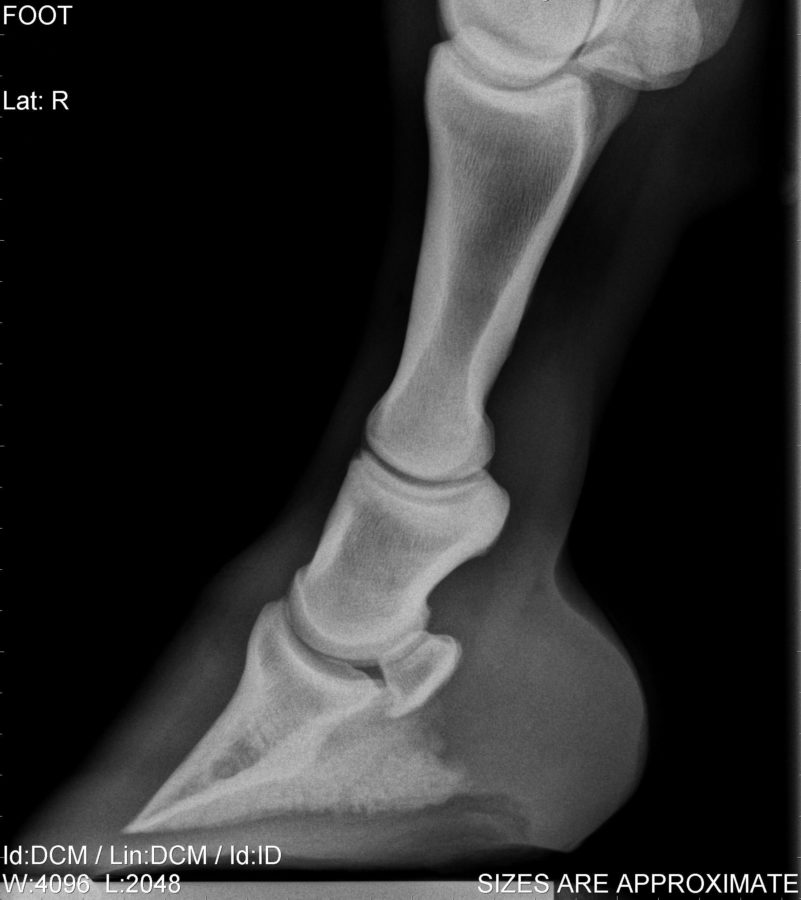Pre-purchase Exams

Horses seldom come with money-back guarantees. That’s why it’s so important to investigate before you buy. While many horse professionals can help you evaluate performance or breeding merits, only an accomplished equine veterinarian can help you determine the prospect’s overall health and condition. Yet this is probably the most significant factor in deciding whether an animal is going to be a wise investment.
 Whether you want a horse as a family pet, a pleasure mount, or a high performance athlete, you stand the best chance of getting one that will meet your needs by first investing in a pre-purchase examination. The expense will be small in comparison to the long-term costs of keeping and caring for a horse – especially one with health problems.
Whether you want a horse as a family pet, a pleasure mount, or a high performance athlete, you stand the best chance of getting one that will meet your needs by first investing in a pre-purchase examination. The expense will be small in comparison to the long-term costs of keeping and caring for a horse – especially one with health problems.
Deciding what should be included in the purchase examination requires clear communication between you and your veterinarian.
- Explain to your veterinarian your expectations and primary uses for the horse, including short and long term goals (for example, showing then breeding).
- Ask your veterinarian to outline the procedures that he/she feels should be included in the examination and why.
- Establish the costs for these procedures.
- Be present during the purchase exam. The seller or agent should also be present.
- Discuss with your veterinarian his/her findings.
- Don’t be afraid to ask questions or request further information about your veterinarian’s findings.
The veterinarian’s job is not to either pass or fail an animal. It is to provide you with information regarding any existing medical problems and explain the possibility for future problems, especially in light of the horse’s intended use. Your practitioner can only advise you about the horse’s physical condition, including conformation, and explain how it might affect performance from a health standpoint.
Keep in mind that the purchase exam is like a still photo. It provides information about an individual horse on a given day at a particular moment. How accurate and complete that picture is will depend on how comprehensive the exam is and what the problems actually are. But remember the still photo cannot provide the whole story. Many factors contribute to a horse’s past, present and future health and these factors may not be apparent at the precise moment of the examination.
Even with these caveats, the information contained in this portrait can be very valuable. Ultimately, avoiding the purchase of an unsuitable horse will save much disappointment and many dollars.
The veterinarian may include the following in his exam:
- Evaluation of conformation
- Palpation of body and limbs
- Evaluation of feet visually and with hoof testers
- Watch the horse travel in a straight line at the walk and lunge on hard and soft surface in small circles at the trot and canter
- Manipulation of back and limbs
- Perform flexion tests on joints.
- Listen to the heart and lungs and check pulse, respiration, and temperature.
- Inspect nostrils, ears, and eyes
- Draw blood sample for Coggins and other tests
- Observe horse’s behavior
The preliminary examination should alert the practitioner to problems or potential problems. If the veterinarian suspects something that may interfere with the horse’s intended use, he or she may recommend further tests such as X-rays, fluoroscopy, nerve blocks, urinalysis, blood analysis. endoscopic and ultrasound examination. They are generally used to confirm a diagnosis and provide a clearer picture of the seriousness of the problem.
Radiographs and fluoroscopy are not a substitute for a thorough, systematic examination by your veterinarian. Depending on the prospective horse’s age, history and future career they may or may not be necessary if there are no apparent problem areas. Rely on your veterinarian’s judgment regarding the need for radiographs, especially if no clinically apparent problem exists.
You need to thoroughly understand your veterinarian’s findings in order to make an informed decision about your prospective purchase. If you don’t understand the grading system for lameness, for example, then you need to ask questions until it becomes clear. Also, when you discuss the results with your veterinarian, keep the following in mind.
No horse is perfect in every respect:
- Some medical conditions or conformation faults are manageable or may never seriously affect the horse’s performance.
- Learn what management options (such as specialized shoeing, exercise or nutrition) are available, and decide whether or not they are practical for your needs and your budget.
- If in doubt about the findings, get a second opinion.
- Finally, make your own determination as to whether a horse is a good investment based on all available data.
Remember, the decision to buy is yours alone to make. Even so, your equine practitioner can be a valuable partner in the process by providing you with the objective, health-related information.
Even if you should decide not to buy, consider the exam money well spent. The investment can save you headaches, heartaches, and dollars, and provide a perfect opportunity to find the right horse- one that is healthy and can meet your needs and expectations.
Reprinted with special permission from the Miles /AAEP Client Education Series

